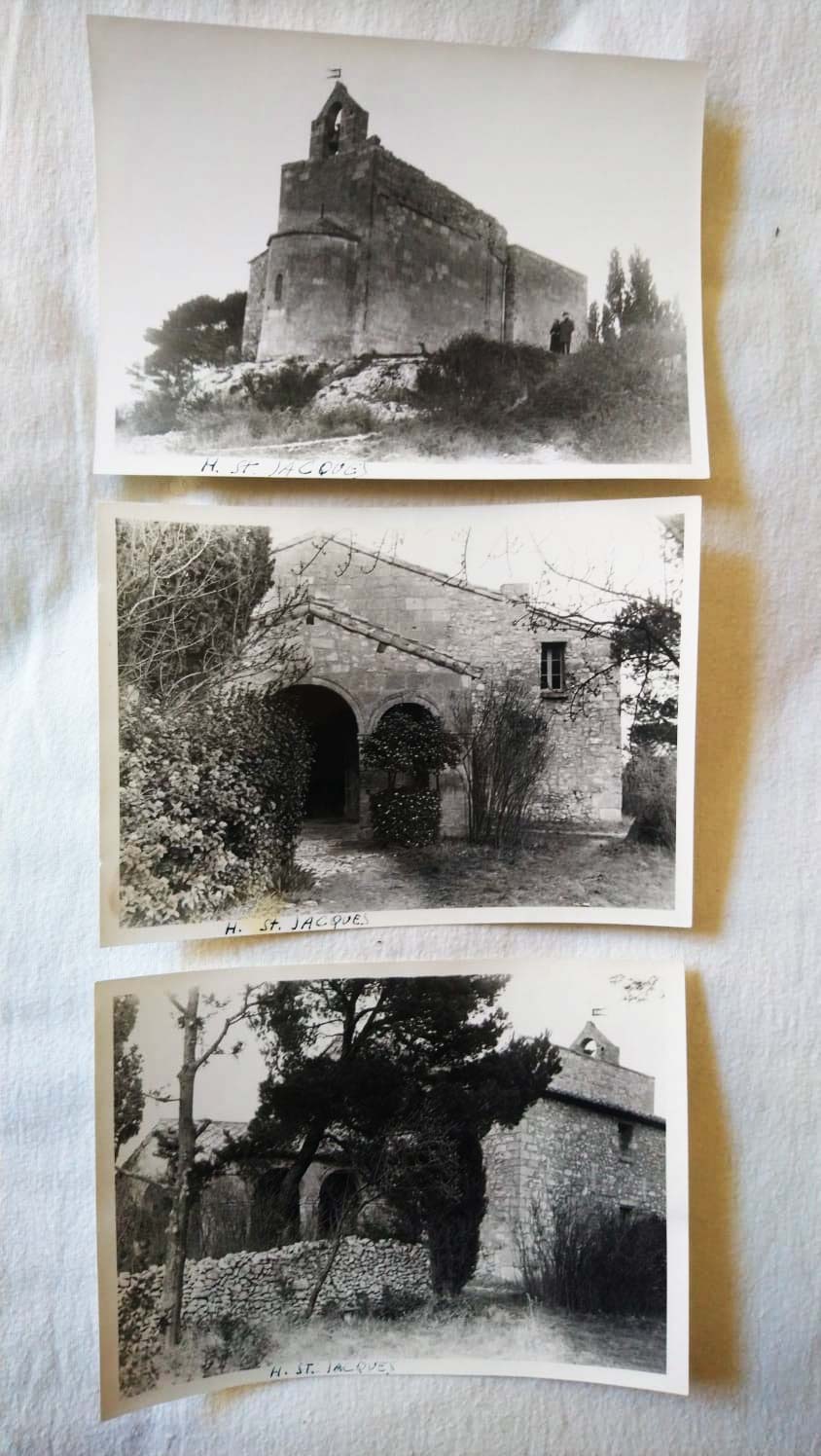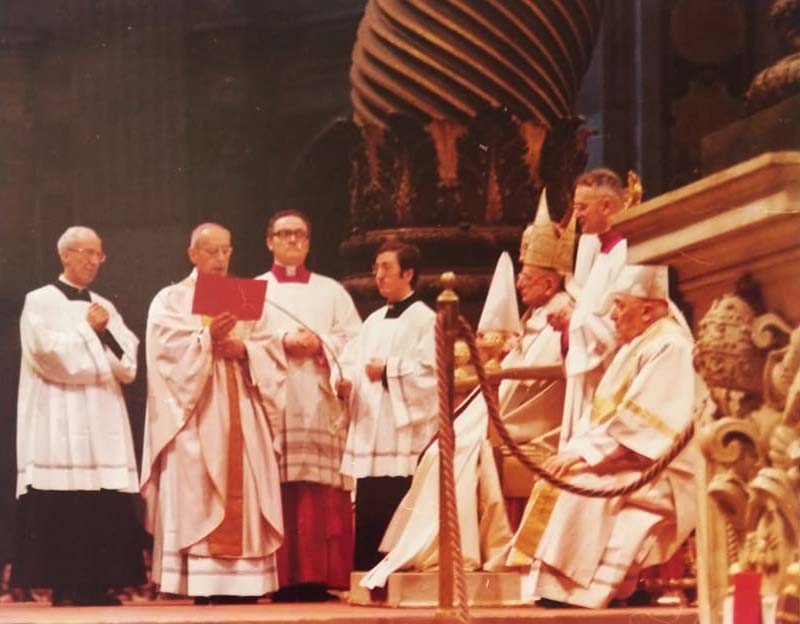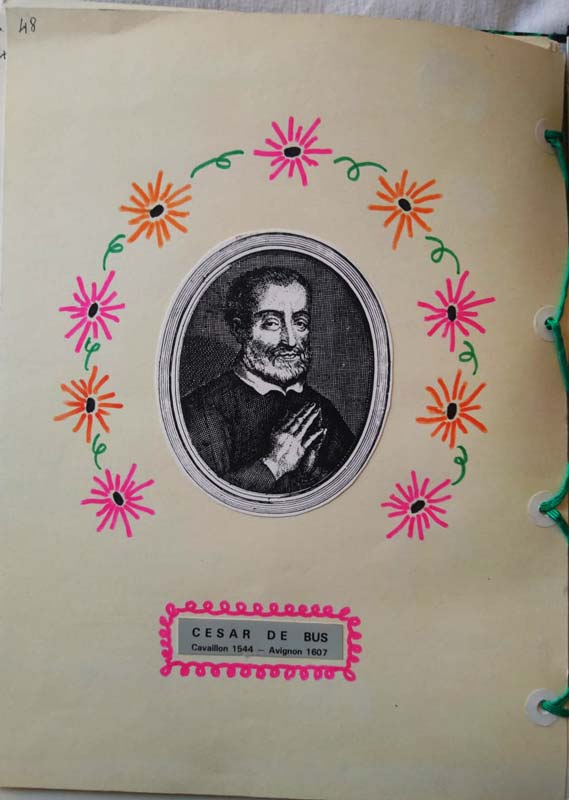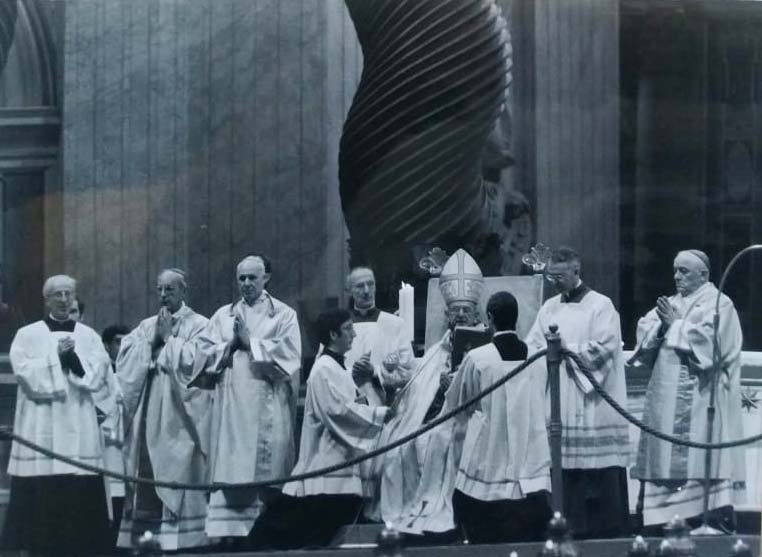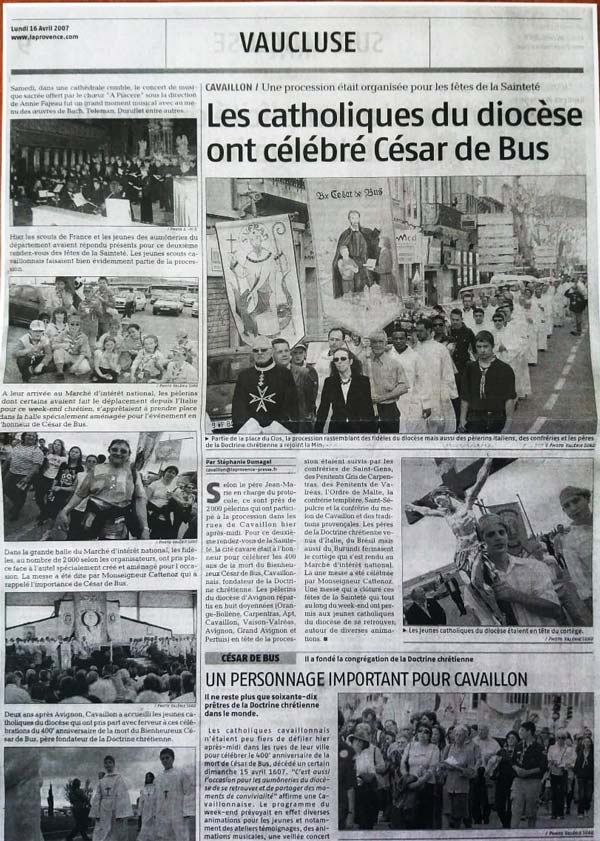France
Return to France
In the storm of the French Revolution
At the outbreak of the French Revolution in 1789, the Congregation had about sixty houses in France and about thirty in Italy and was divided into Provinces: Avignon, the cradle and spiritual centre, made up of twenty-seven communities; Toulouse, eighteen communities; Paris, seven communities; La Flèche, the exact number of which is not known as it was a Province in formation; Rome and Naples. In France, many Fathers devoted themselves to sacred eloquence, following in the footsteps of Father Audifret. At the same time, theology found its scholars in Fathers Le Semelier, Annat, Besombes, Suret, Laroque, Beuf, Gochon, Camblat, while Fathers Boleran, Grenan, Baizé, Louvreleul and Vanin distinguished themselves in letters and teaching. Father Vanin was the first to dedicate himself to the instruction and education of the deaf and dumb, adopting a method that included the support of images.
Father Laboysiére was a preacher at the Court of Louis XVI, Father Corbin was the tutor of the heir to the throne, Father Bonnefoux directed the Institute of Charity in Paris, Father Le Semelier taught Theology in Paris and was the author of conferences on morality, which were printed in twenty-two volumes. Father Iard preached Lent four times in Paris, left five volumes of meditations on the Gospels and Epistles of the year; Father Clombe was a professor of Theology at San Carlo and published the Institutiones Theologicae in ten volumes. The Doctrinaries Richard, Dirivier and Domergue distinguished themselves for their literary and grammatical criticism, Father Laromiguiére was an illustrious scientist.
The impetuous winds of the Revolution also hit the Congregation. In 1790 all religious corporations were dissolved, but the execution of the ordinance remained suspended for the Congregations dedicated to the education of youth. Thus the Doctrinaries survived until August 1792, when all Orders and Congregations were definitively abolished. When the revolutionaries arrived, Father Claudio Bochot, superior, and Father Eustachio Felix, bursar, refused to sign the “Civil Constitution of the Clergy”, were arrested and taken to the Seminary of San Firmino, which was transformed into a prison.
The Brief of the beatification of Fathers Claudio Bochot and Eustachio Felix reports that they were killed inside the house, or thrown out of the window onto the street, where ferocious women rushed upon the priests to beat them bloody with sticks; not content with this, they climbed onto the carts where the bodies were laid and trampled them, cut them into pieces and proudly showed the limbs to passers-by shouting “Long live the Nation”.
Another Doctrinaire, Father Joseph Raoulx, refused to take the oath for the “Civil Constitution of the Clergy” and was locked up in the prison of San Lazzaro. Sentenced to death on July 25, 1794, he asked to be killed last so he could give absolution to his companions: he was guillotined the same day.
Other Doctrinaries, rather than take the civil oath of the clergy, prefer to flee, they go to Rome where Father Royer, Procurator General, and the other brothers welcome them lovingly, placing them in various houses of the Roman Province. Other Doctrinaries take refuge in Ravenna, Ferrara, Bologna. Still others take refuge in Switzerland, Belgium, England. Some Doctrinaries instead give in and sign the “Civil Constitution of the Clergy”.
The last French Superior General, Father Bonnefoux
Elected in the Chapter of Paris in 1776, confirmed in 1782 and reconfirmed in 1788, no Superior General has ever fought and suffered so much for the Congregation as Father Bonnefoux. Father Bonnefoux contributed effectively to the mission of the Congregation, giving a strong impulse to teaching, opening new colleges and bringing the Congregation to the highest degree of development and prosperity. From 1710 he opened the colleges of Bedarides, Vence, Senez, Miramont, Barcellonette, Lodève, Nant in Rouergue, Sospello, Castelnoudary, Moissac, Tarbes, Acqs, Bellac, Avallon, Vitry-le-François, Châlon-en-Champagne, Troyes, Trégnac, a third house in Paris, the Esquiline college in Toulouse, with a school complex including all levels of study from elementary school to the faculties of Theology and Philosophy, the college and seminary of Mende and the seminary of Nîmes. Later, the houses of Carpentras, Carcassonne, La Flèche, Bordeaux, Saint Omer, Montpellier, Montauban, Orange, Avignon, Aix, Condom, Gap and others were added.
During the French Revolution he refused to swear the oath to the Civil Constitution of the Clergy and with great sorrow saw two hundred years of work and sacrifices of many brothers go up in smoke because of the hatred that was unleashed against the Catholic religion. He died in 1806 in the Foundation of Abbot Sicard in Paris and with him the presence of the Congregation in France, the birthplace of the founder Caesar De Bus, ended.
The return to the land of the founder
The first attempt to re-establish the Congregation in France dates back to 1850, but it would take more than a century. In 1966, at the invitation of the Archbishop of Avignon, Mgr. Joseph Urtassun, the Fathers returned to the land of the Founder, to Cheval Blanc, six kilometers from Cavaillon. Father Battista Previtali and another brother began a humble and significant presence, and they were joined by Father Francesco Balzola, who had returned from Brazil.
In 1985, the new Archbishop of Avignon, Monsignor Raymond Bouchex, entrusted the parish of Cavaillon, with the Cathedral, so beloved by the Founder, to the Congregation. Father Battista Previtali was appointed parish priest, with Father Giambattista Carnevale Garè and Father Adair Diniz, Brazilian. Many other brothers have since then committed themselves to service not only in the parish of Cavaillon, but also in the Diocese of Avignon. In particular Father Giorgio Levorato, Father Franco Mangili, Father Vincenzo De Martino and Father Giovanni Mario Radaelli.

